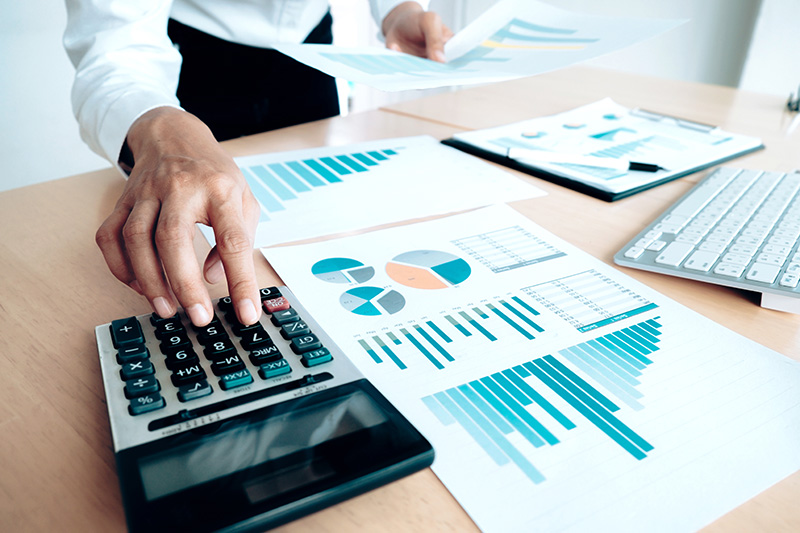The stock market can be a lucrative endeavour, but it’s crucial to comprehend the costs associated with investing. Using a brokerage calculator is one way to keep track of these expenses. Investors can use a brokerage calculator to figure out the costs and fees involved in purchasing and selling stocks. To guarantee accurate findings and make wise investment choices, the brokerage calculator must be used correctly.
What Is A Brokerage Calculator
The costs and fees related to trading on financial markets may be calculated by traders using a brokerage calculator. It aids traders in estimating the price of a deal, taking into account brokerage costs, applicable taxes, and other costs. The calculator normally considers the trading instrument, amount of trading, and commission structure of the broker. Some brokerage calculators could additionally include extra costs, including stamp duties and regulatory fees, which might change depending on the jurisdiction.
By providing customers with a clearer knowledge of the associated fees, using a brokerage calculator can assist traders in making more educated decisions regarding their transactions. Additionally, it can assist traders in comparing the expenses associated with trading with several brokers, enabling them to select the one that provides the most affordable rates.
On their websites or as a component of their trading systems, several brokers like Kotak Securities, offer brokerage calculators. Online third-party brokerage calculators are also accessible and may be used to estimate costs for various brokers and exchanges.
Here are 5 tips on how to use the brokerage calculator the right way:
Understand the Fees: It’s critical to comprehend the different charges and fees that brokerage firms impose on investors before utilising the brokerage calculator. Brokerage costs, transaction fees, GST, stamp duty, SEBI turnover fees, and other statutory charges are some of these fees. Knowing your broker’s fee structure is crucial because every brokerage firm has a different set of charges.
To ensure that the results of a brokerage calculator are trustworthy and helpful, it is crucial to enter precise data. This entails verifying all data before entering them into the calculator, including the stock price, quantity, brokerage fee, and other fees.
Enter the Correct Data: Inaccurate data entry can have serious consequences, potentially leading to incorrect calculations and resulting in misguided investment decisions. So, take note of the following.
- Due to the market’s constant movement and the potential for significant stock price changes, keep a watch on it.
- Both the potential return on investment and the overall cost of trading may be greatly impacted by these developments.
- Monitoring broad market trends and breaking news events that may have an impact on their assets is also essential.
- As a result, traders must not only use a brokerage calculator to plan their investments but also keep an eye on market trends and news stories that may have an impact on their investments. As a result, traders would be able to base their investment choices on accurate data and market insights.
Determine the Break-Even Point: The break-even point is the price at which the total cost of buying and selling a stock equals the stock’s selling price. By figuring out the break-even point, you can prevent losses and make prudent investment choices. You can use the brokerage calculator to help you determine the break-even point based on the input data you provide.
Use a Variety of Calculators: Even while brokerage firms frequently offer their own brokerage calculators, it’s always a good idea to use a variety of calculators to cross-check the results. can use several calculators to identify any discrepancies or errors in the results and make more informed financial decisions. By comparing the results of different brokers or financial institutions, you can better understand the costs and fees associated with trading.
You can do this by using a variety of calculators. Go with reliable ones offered by firms like Kotak Securities. The calculator is available on it’s web portal and also on the stock trading app. Depending on the underlying assumptions or the chosen fee structures, the output of different brokerage calculators may differ. Using a variety of calculators can help you ensure that the picture you are getting of the costs and fees associated with trading is thorough and correct.
Keep Records: By maintaining meticulous records, you can track the performance of your assets, identify areas where costs can be cut, and make future investment decisions that are better informed.
By keeping records, traders can keep track of costs associated with each deal, including brokerage fees, transaction fees, and other charges. This data can show traders patterns in their trading behaviour and bring out places where they might be able to cut costs.
Conclusion
In summary, we can draw the following inferences.
- Proper use of the brokerage calculator is essential for accurate results and wise investment choices.
- You can make the most of the brokerage calculator and reduce your trading expenses.
- comprehend the fees, provide accurate data, select the best brokerage plan, monitor the market, figure out the break-even point, use multiple calculators, and maintain records.





